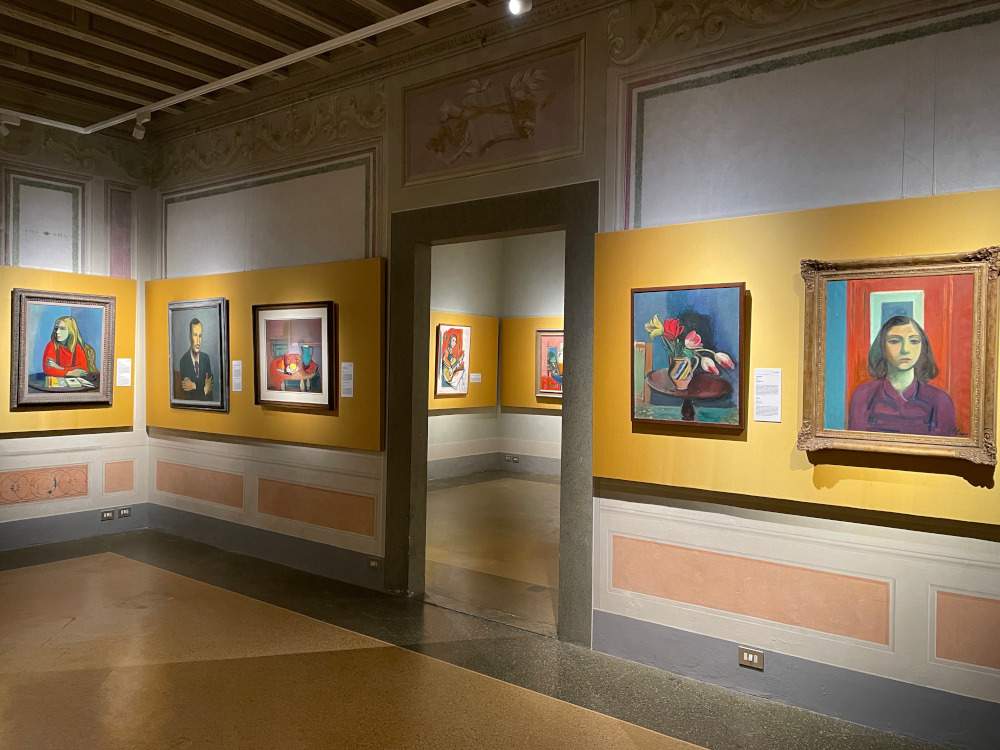A major retrospective at Palazzo Pitti on Rudolf Levy, Jewish expressionist painter deported to Auschwitz
From January 24 to April 30, 2023, Palazzo Pitti, in the Andito degli Angiolini, dedicates a major retrospective to Rudolf Levy (Szczecin 1875 - Auschwitz 1944), German Expressionist painter and pupil of Matisse. Nearly eighty years after the artist’s death and a few days before Holocaust Memorial Day, the Uffizi Galleries thus pays tribute to him with an exhibition entitled Rudolf Levy (1875-1944) - The Work and Exile that traces his entire output. The forty-seven works on display intend to tell the story of Rudolf Levy’s tormented existence through his paintings, from his youthful years to his years of exile, including the last ones spent precisely in Florence, which are considered the most prolific from an artistic point of view.
The young Levy began painting in Germany under Heinrich von Zügel, one of the founders of the Munich Secession. He then moved to Paris, where he assiduously attended Henri Matisse’s school of painting. After fighting in World War I, he went to live in Berlin: here his first solo exhibition was held in 1922, which introduced him to a wider circle of public and critics. When persecution against Jews began, Levy left Germany and his wanderings began, between Majorca, France, the United States, and Dalmatia. He then arrived in Italy in January 1938; after a stay in Ischia and a year or so spent in Rome, he arrived in Florence in 1941. In his room-atelier in Palazzo Guadagni, in Piazza Santo Spirito, Levy found his lost creative happiness: from 1941 to 1943 he made over fifty paintings, mostly still lif es and portraits. On December 12, 1943, after the German occupation, he was arrested and imprisoned at the Murate, then transferred to San Vittore in Milan. On January 30, 1944 he was put on a train to Auschwitz, in the same transport as Liliana Segre. Upon arriving at Auschwitz he was allegedly sent immediately to the gas chambers because he was considered too old to be used for slave labor, and his presumed date of death is when the convoy arrived at Auschwitz, February 6, 1944.
The brainchild of Klaus Voigt, a scholar of the exile of Jews and anti-Nazis in Italy, the Palazzo Pitti exhibition is curated by Klaus Voigt himself, who recently passed away, Susanne Thesing, author of the monograph on Levy, Vanessa Gavioli, curator of the Uffizi Galleries, and Camilla Brunelli, director of the Museum of Deportation and Resistance in Prato.It aims to introduce Levy to the general public: because of the fierce Nazi repression against Jews and against so-called degenerate art, the artist’s works in German museum collections were largely stolen or dispersed. In the immediate postwar period, two exhibitions were dedicated to Levy, but the painter was not brought to attention thereafter.
The exhibition is divided into three sections. The first illustrates a selection of early works painted up to World War I, where the influence of Henri Matisse is strong. Paintings from 1919 to 1933, the period before his exile, make up the second part of the itinerary: still central in this nucleus of works is the constant dialogue with the art of Matisse but also with that of other avant-gardes. The third part reflects the late work in the age of exile, from 1933 to 1943, and includes paintings that were exhibited in Florence in 1946 and 1950. Also present are paintings never exhibited in Italy so far, which are now in private and public collections, especially in Germany.
Finally, there is an in-depth look at objects that belonged to the artist, such as photographs and letters, which, together with catalogs and official documents, offer valuable testimony about his life.
The exhibition, with variations, will move in the fall to Kaiserslautern, Germany.
“Florence was the safe haven where for years Levy was able to paint in an international and stimulating atmosphere,” said Uffizi Galleries director Eike Schmidt. "But the racial laws that stained Europe also came here, ending his artistic adventure and his life. Of Levy, the Uffizi acquired in 2020 a splendid portrait of a girl(Fiamma), executed precisely in Florence, and now, on the occasion of Holocaust Remembrance Day, they are fulfilling their moral duty to tell the tragic story of the painter. A story that, it turns out, is briefly intertwined with that of Senator Liliana Segre."
“Too little has been said so far about Rudolf Levy in Florence, where he was arrested on Dec. 12, 1943,” added the director of Prato’s Museum of Deportation and Resistance, Camilla Brunelli. “What was missing was a major tribute to the painter, a monographic exhibition that had as its focus the years of exile, particularly the last ones he spent in Florence, and that outlined, also through a documentary apparatus curated by Berlin historian Klaus Voigt, who unfortunately passed away recently, his human story of persecution, exile and deportation. Klaus Voigt studied for many years the exile in Italy of Jews and opponents of the Nazi regime and was writing a book about him: I am pleased to recall that we owe to him the idea of this exhibition, which was immediately accepted by the director of the Uffizi.”
As part of the initiatives dedicated by the Uffizi Galleries to Holocaust Remembrance Day, a Morning of Studies in Memory of Rudolf Levy, organized in collaboration with the Museum of Deportation and Resistance in Prato, will be held on January 26, 2023 at the Vasari Auditorium.
 |
| A major retrospective at Palazzo Pitti on Rudolf Levy, Jewish expressionist painter deported to Auschwitz |
Warning: the translation into English of the original Italian article was created using automatic tools. We undertake to review all articles, but we do not guarantee the total absence of inaccuracies in the translation due to the program. You can find the original by clicking on the ITA button. If you find any mistake,please contact us.





























